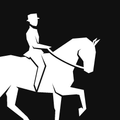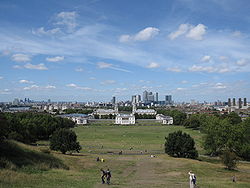| Equestrian at the Games of the XXX Olympiad | |
|---|---|
   Pictograms for Dressage (left), Eventing (center), and Jumping (right) | |
| Venue | Greenwich Park 51°28′49″N0°00′11″W / 51.4803°N 0.0031°W |
| Dates | 28 July – 9 August 2012 |
| Competitors | 199 from 40 nations |
| Equestrian events at the 2012 Summer Olympics | ||
|---|---|---|
 | ||
| Dressage | individual | team |
| Eventing | individual | team |
| Jumping | individual | team |
The equestrian events at the 2012 Olympic Games in London were held between 28 July and 9 August at Greenwich Park. Medals were awarded in three disciplines for both individual and team competitions. [1]
Contents
- Events
- Qualification
- Dressage qualification
- Jumping qualification
- Eventing qualification
- Competition format
- Show jumping
- Dressage
- Eventing
- Medal summary
- Medal table
- Medalists
- Gallery
- References
- External links
Great Britain was the most successful nation, topping the medal table with three golds and five medals in total. They were particularly dominant in team events, taking two gold medals and a silver medal from three team events.








